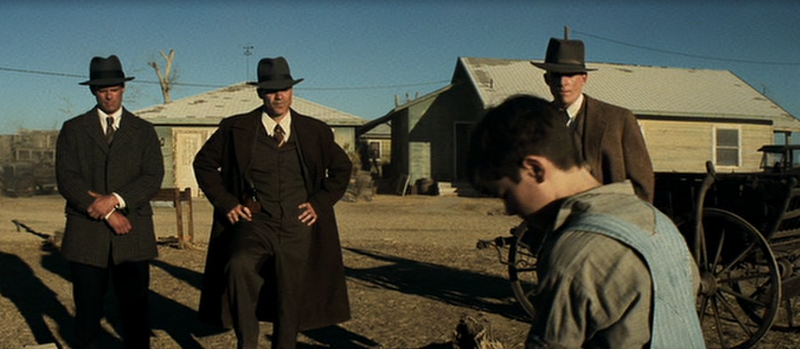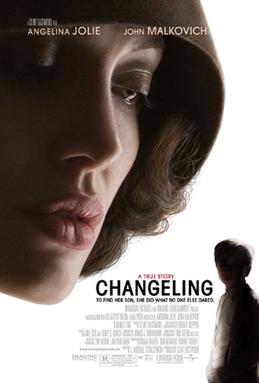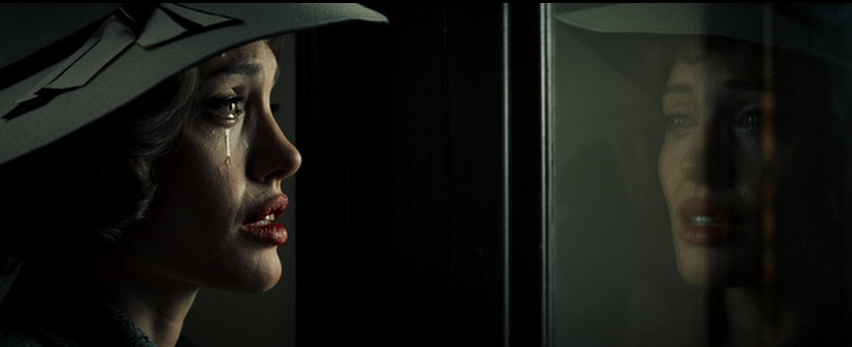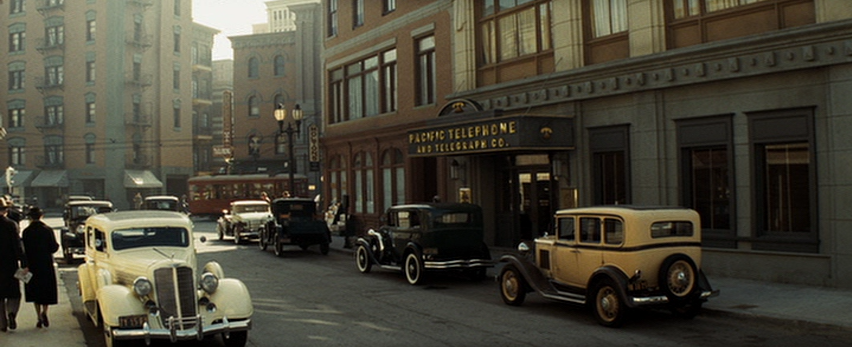

“It’s raining cats, dogs, and Democrats out there, this better be worth it.”
Clint Eastwood has become an incredibly reliable director in his later years. He often chooses straightforward stories (many of them true) of pain and loss, pushing for maximum emotional impact without trying to fool his audience with surprises. He relies on strong writing, a solid story, and emotive acting to deliver his heavy punches. Some of his late career triumphs include Million Dollar Baby (2004), Gran Torino, and the companion pieces Flags of Our Fathers and Letters from Iwo Jima (both 2006). In Changeling, our focus is entirely on Angelina Jolie’s Christine Collins, a mother who has been separated from her son.
The account is mostly factual, based on a true story of a mother whose nine year old son, Walter, went missing in March of 1928. Five months later, the LAPD claimed to have found her son in Illinois; but when he arrived home, Christine did not recognize the boy. Under pressure from the police, she takes the boy home with her, accepting that perhaps his five-month ordeal and her shock at his return could be messing with her perception. But she discovers that the boy is three inches shorter than Walter, and that he has been circumcised, whereas Walter had not. He is not recognized by his classmates or teacher, and the boy’s dentist is willing to put in writing that the boy that was returned to her is not her son. But it is impossible for Christine to fight the LAPD alone, especially since Walter’s return was such a public spectacle—a rare moment of positive press for the police force.
The core of the film revolves almost as much around uncovering the corruption in the LAPD as it does with Christine’s quest for her son. Aided by a local Presbyterian pastor, Reverend Gustav Briegleb (John Malkovich)—who is really more of an activist than a minister, using his radio show to highlight the blunders of the corrupt police force—Christine puts public pressure on a police department that considers themselves above the law. Led by Captain J.J. Jones (Jeffrey Donovan) and Chief James E. Davis (Colm Feore), the police routinely suppress Christine’s attempts to right their wrongs. Her persistent fight with authorities gets Christine thrown into the psychiatric ward. In confinement, Christine finds herself among other women who have been thrown into the ward for being an inconvenient nuisance to police officers. In the ward, they are drugged and undergo shock therapy, their phony mental illness treated as a crime.

Jolie gives a powerhouse performance as Christine Collins. I mentioned to my wife while we were watching that I felt like Jolie was required to cry in every scene. That’s exaggerating, but she is often called upon to be teary-eyed, have her voice crack with emotion, and have looks of confusion and hopelessness contort her face. Later, when we finally get around to discovering Walter’s demise at the hands of Gordon Stewart Northcott (Jason Butler Harner), Jolie displays great range in her interrogation of the man as he waits for his execution by hanging. Two days before his scheduled hanging, he sends a telegram saying that he will personally confess to Christine Collins if she is willing to travel to Death Row to speak with him. However, when she arrives, he clams up. She slams him against the wall of the cell, shouting in his face again and again: “Did you kill my son! Did you kill my son!” He refuses to answer, and repetitions change to the venom-laced, “I hope you rot in hell!” Some dislikes her performance because it seemed intentionally geared toward getting an Oscar nomination; I don’t care if it was or not, what matters is that she nailed it.
A single good cop, Detective Lester Ybarra (Michael Kelly), persists in the pursuit of justice, uncovering the grave reality of Walter’s fate when responding to an unrelated juvenile matter. Though he is instructed not to follow up, he disobeys his orders in order to do what is right. Eastwood smartly chooses not to spend too much time on Northcott’s background. He enters relatively late in the film (though brief appearances are peppered in so it isn’t a surprise when he shows up) and is pronounced guilty without much screen time dedicated to what formed him into the cold-blooded killer of twenty young boys. Harner plays him with a detached creepiness that seems otherworldly, like a devil in human flesh. The scene of his hanging is gut-wrenching as he debilitates into a childlike pleading and then begins quietly singing ‘Silent Night,’ and Eastwood chooses to linger on the scene as he thrashes about at the end of the rope.

The production value here is astounding in its attention to period detail. Vintage vehicles, streetcars, costume design. Christine even rollerskates in high-heels at the telephone exchange. Eastwood himself composed a lilting jazzy score that is evocative yet remains in the background throughout. Writer J. Michael Straczynski, a former journalist, developed the script based on original sources—newspaper articles and the like—because there was not yet a concise retelling of the story (a quick Google query tells me there are now two in book form).
Because the narrative must follow the real story, the film ends up hopping into several different genres, which is sometimes disorienting. There are several off-key moments, like Christine’s subdued response when she discovers that her son is missing, and her inability to produce a photograph of her son to compare to the false Walter (at first I thought there might not be a photograph, but one is used later by Detective Ybarra).
While there are some missteps, it is impossible to deny Eastwood’s confident direction, the magnificent period aesthetic (I’m a sucker for it, even if they probably did a lot of the exteriors digitally), and the powerful performances from the main cast. Due to its real-life, untidy plot, it doesn’t stand up as a contained masterpiece like Eastwood’s best efforts, but it is a fascinating look at America’s past.